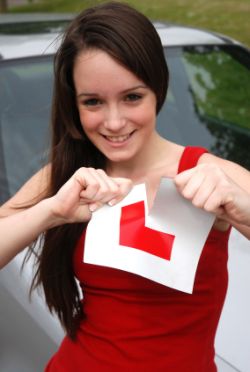Your car and the lights on it
We are all used to seeing cars in the dark, and also seeing their indicators in the day to communicate to other car drivers. But what must you ensure with regard to the lighting of your car?
Most people don't give this much thought, but of course there are lights that must be fitted to a vehicle in order to comply with the legislation and regulations of the land.
It is the responsibility of the driver of the vehicle to ensure that their lights are both present and in correct working order, and they will be committing an offence if this is not the case.
You must have two headlamps, two sidelamps, two rear lights, a number plate lamp, two red reflectors at the rear, flashing direction indicators at the front and the rear, rear stop lamps and also rear fog lamps.
So you can see that there are actually quite a few lights that you require. You should check these periodically for your own safety anyhow.
It can be difficult to know if an indicator bulb has gone for instance, so all you need to do is get a friend or family member to walk around the car as you try the various lights and let you know if anything isn't working: a broken indicator bulb for instance can cause real confusion to other road drivers who won't be expecting your manouevres as they won't be able to see which way you are indicating if the bulb is broken and therefore should be replaced immediately.
Related Articles...
Using head restraints
Your car will have head restraints in it, but do you take the time to adjust these before using the vehicle and ensuring they are set at the correct level for you? Head restraints in vehicles are...
Taking the theory test if you don't speak English
Not everyone who takes the Driving Theory Test will be confident enough in their ability to speak and understand English to take the test. Whilst some people in Wales will want to take the test in...
How to book your driving theory test
There is now an online booking system in place that will allow you to book a driving theory test online.
There are also other ways to book a driving theory test: over the phone and you can...
How does the hazard perception test work
The hazard perception test is the second part of the driving theory test, and it was introduced towards the end of 2002.
There are two parts to the theory test, and the second part of the test...
Hazard Perception
There has been a significant increase in the focus of hazard perception and hazard awareness in the last few years since the introduction by the DSA of a separate hazard perception element to the...
The automatic car explained
In most cases, you will learn to drive with a car that has gears in the United Kingdom.
However there are people who prefer to learn in an automatic car, and there are various driving schools...
Tips on joining a motorway
Joining and leaving the motorway are generally considered the more tricky elements of the journey. When it comes to leaving the motorway, it is all about selecting the right exit and moving over to...
When you must not stop when driving
The regulations relating to stopping article looks at when you must stop, now it is time to look at when you must not stop as a driver...
There are times when you need to stop, but also many...
How to learn UK road signs
Learning UK road signs is something that will unfortunately require you to
take the time to study them all. Many signs turn up in the theory test so
you do need to take the time to do this. But...
What signs with a percentage mean
When you are driving in some places, the roads will be up and down in terms of gradient, which refers to how the height of the road changes as you move along it, just like on a hill.
When you...
Back to home page of driving theory test questions

